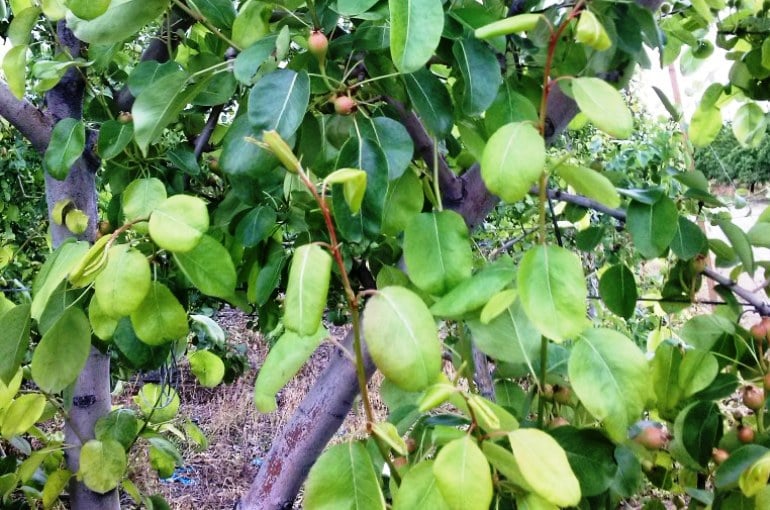Pear Tree Climate Conditions

This post is also available in:
This post is also available in:
![]() Español (Spanish)
Español (Spanish) ![]() Français (French)
Français (French) ![]() Deutsch (German)
Deutsch (German) ![]() Nederlands (Dutch)
Nederlands (Dutch) ![]() العربية (Arabic)
العربية (Arabic) ![]() Türkçe (Turkish)
Türkçe (Turkish) ![]() 简体中文 (Chinese (Simplified))
简体中文 (Chinese (Simplified)) ![]() Italiano (Italian)
Italiano (Italian) ![]() Ελληνικά (Greek)
Ελληνικά (Greek) ![]() Português (Portuguese (Brazil))
Português (Portuguese (Brazil)) ![]() polski (Polish)
polski (Polish)
Pear Tree Growing Conditions – Pear Tree Climate Requirements
In general, the pear tree thrives in cold and wet climate, where there is winter cold along with a cool summer. It is estimated that the popular pear varieties need about 400-800 hours of cold (exposure to temperatures below 45 °F or 7 °C) in order to have a regular development and fruition. However, there are varieties that may require up to 1500 hours of cold for a successful fruit set, while others can produce fruits after just 150 hours.
Abundant sunlight is necessary, as it significantly affects the color of the fruit. Most popular varieties thrive in regions where the temperature rarely increases well above 90°F (32°C). Some pear farmers also make use of big fans in order to cool the orchard, when the temperature exceeds a certain point.
Old farmers claimed that the apple and pear tree could only produce good yields when grown at a certain altitude (above 1600 ft. or 487m.) and only if the trees had experienced annually more than 1200 hours of cold (cold is defined as the exposure to temperatures below 45 °F or 7°C). This was true for the varieties that were popular at that time. However, nowadays, the resiliency and adaptability of apple and pear tree in general combined with careful variety creation (breeding) and selection have enabled growers to cultivate commercially apple and pear trees even in warm climates. For example, University of Florida has developed a pear cultivar that produces very good yields in the respected area. Nonetheless, cultivating pear trees commercially in warm climates is not easy. It requires extensive experimentation (selecting and cultivating at least 10 different varieties a year) and of course continuous optimization of pollination, irrigation, fertilization and harvesting methods.
Consequently, a prospective pear farmer shall make an extensive research regarding the variety that most closely matches the climate conditions of his/her region. A pear tree variety that thrives in Canada is definitely not suitable for Florida and vice versa. It is still true that the most popular varieties need certain hours of cold in order to produce fruits for the next 30-40 years. You may need to discuss with other pear growers in your area about varieties that can be easily adapted to your climate.
You can enrich the article by leaving a comment on you pear orchard’s climate conditions.
2.) How to grow a Pear Tree from seed
3.) Growing Pear Trees in pots
4.) Growing Pear Trees commercially
5.) Pear Tree Climate Conditions
6.) Pear Tree Soil Requirements and Preparation
7.) Pear Tree Propagation and Pollination
9.) Pear Tree Water Requirements
10.) Pear Tree Fertilizer Requirements
12.) Pear Tree Harvest & Yields
13.) Pear Tree Pests & Diseases
Do you have experience in Pear Tree cultivation? Please share your experience, methods and practices in the comments below. All the content you add will be soon reviewed by our agronomists. Once approved, it will be added to Wikifarmer.com and it will influence positively thousands of new and experienced farmers across the world.








































































